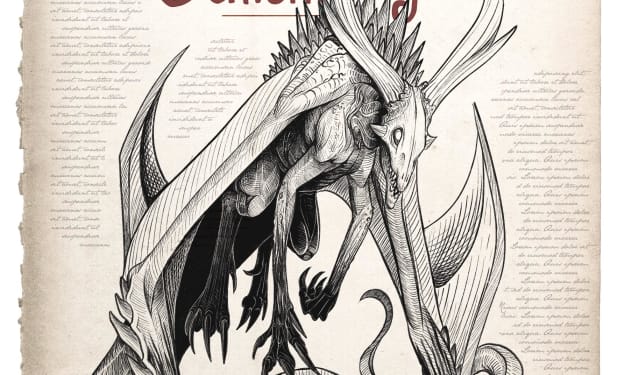The Future of Storytelling Pt. I–Creator First Publishing
The publishing world is changing, it is up to us as creators to deliver what the audience wants.

Publishing is changing. Whether or not we like it, or whether the big publishing companies agree with it, the publishing world is evolving. You can either keep up with it or get left behind. Technology is changing the way we tell stories and how we connect with our audience. Just like social media has placed near fame in the hands of every celebrity hopeful, telling stories is in the hands of the creators more than ever.
This shift in communication, discovery and entertainment is why I believe “Creator First” publishing is the future of storytelling.
I use the term “Creator First” publishing to contrast the current state of publishing, which is “Business Model First” publishing. The publisher has a business model which decides what authors they publish, what book covers looks like and who illustrates them, who will read their books and how they will read their books. This is all based on years and years of data, and business analytics, charts and graphs and trends and audience testing. All to determine what people will buy. Publishing companies know how to sell to their audience as long as storytelling doesn’t get in the way.
The entire publishing industry is built around one core concept, selling books. They spend endless amounts of time and money to understand their audience, what sells and what doesn’t. As disheartening as it may sound, they are not waiting for that one amazing story to change the world. It’s a unicorn, it doesn’t exist. They are simply looking for what they can or want to sell. This illustrates one of the core issues with a “Business Model First” publishing strategy. They want to sell books. They are book selling companies, not storytelling companies.
To illustrate this (pun intended) I was recently reading about the illustrator that created the very first cover art to the very first printing of Harry Potter. If you have a moment, google the cover illustration to the 1st edition print. It’s the one with the big red train on it. The illustration is nothing fancy, quite simple really. What I found fascinating was the illustration of the eccentric-looking wizard on the back of the book. Not Dumbledore, make sure you look at the version printed before they changed it to Dumbledore.
As the story goes, they commissioned the illustrator to create the book cover. The publisher said they wanted an illustration of Harry Potter and the train to Hogwarts. So, the illustrator created what they asked of him. Then they asked the illustrator to add something to the back cover, like another wizard or something of wizarding nature. So, to get the job done, the illustrator created a random wizard based on his own father. A nice way to honor a parent, I get it.
I know plenty of creativity goes into plenty of book covers, but this shows what the common practice is. The publisher is the one making these choices, not the storyteller. The creator of the fictional world is usually taking a back seat with these choices, and in most cases, their lack of presence all goes unnoticed.
But as we know, Harry Potter captured the imagination of the world. With that fervor, came the many questions of the wizard on the back. It clearly wasn’t Dumbledore, so who was he? What was he doing? Will he show up in the next book? What’s in his pocket? A slew of questions and curiosity followed. Suddenly this choice to get the job done now carried all kinds of weight for the fans of Harry Potter. It was only with this audience direction that the publisher went back and changed the illustration to Dumbledore.
An audience wants purpose and meaning in the media they consume. Unintentional choices will confuse the audience. An audience wants intentional storytelling. People care deeply about the stories they love. If you don’t believe me, go to a comic convention and casually ask if Batman and the Wolverine ever fought each other. (The answer is not as simple as you might think).
Fans are passionate about the stories they invest in.
An audience wants content, and they have been conditioned to binge content. It’s simply how entertainment has developed. So why are publishers still publishing books with endings in mind? I could be wrong, but I’m not aware of publishing companies giving a debut author a 9 book contract on their very first novel. They want to make sure the first novel sells, and if it does, they may consider publishing more. But imagine what authors could do knowing they had a larger canvas to work with. Imagine a book cover that was created with just as much storytelling in it as the writing.
The publishing industry is changing because the way we consume media is changing. It’s a shift in the tectonic plates of entertainment that doesn’t consider the old ways of doing things. This is why “Creator First” publishing is key to the future of storytelling. Imagine if TikTok would only let you create videos if you could prove you could get ten thousand views with your first video, and if you didn’t, they would delete your account. Business models should support the creator, not the other way around.
Publishing is changing because creators are getting a deeper understating of their audience at a more personal level. Thank you technology! The creator knows the worlds they create. They know what their fans love and want to see more of. Publishers already rely on creator interaction and advertising with their own audience. They even pay ‘influencers’ to market their books. These are all tools within our own hands as creators that we simply didn’t have a decade ago. We are at a rare transition point to take advantage of this shift.
If we as creators hope to embrace this shift in audience wants, we must be intentional in our storytelling. We have been so programmed to create for a business model that we’ve lost what we love about creating to begin with! Limitless creation. The audience wants immersive content; they want purpose and meaning; they want lore; they want connection. Storytelling is more than what is simply read in a printed book. That’s the difference between selling books and telling a good story.
As creators, we need to stop thinking of a printed book as the boundaries of our storytelling! Anytime we type an article, get invited to a podcast, or pull up our phone to make a social media post, those are all opportunities to embrace storytelling. These are opportunities to make our stories deeper than the limits of a printed book. We know what our audience wants, but it will take brave creators to forge the path.
For the record, this article is not against the big publishing companies and for indie publishing. We need those companies; we need that kind of distribution. As creators, those companies are significant resources to share our stories. I’m simply pointing out what’s changing. Whether we embrace this change in the contracts we get, or pursue an independent publishing path to adopt the change, it is up to us as creators to embrace the future, embrace what the audience wants, and usher in the future of storytelling.
The industry will bend to what the audience wants, and the audience wants intentional storytelling. Intentional storytelling comes from passionate authors who are driven to create story worlds without end, encompassing every element of their creation. A book cover illustration is not just something to get done. It’s an opportunity to tell a story within a story.
It's time to do away with the “Business Model First” publishing process and focus on “Creator First” publishing. Will there be failures? Sure. Will there be frustration? Absolutely. Any industry going through change will deal with a lot of difficulties. But as creators, isn't that what we crave the most?
It’s time to begin this adventure.
About the Creator
Demitra
Author / Illustrator / Animator. Obsessed with the ever elusive unicorn of “never been done before”. I’m on a quest to re-invent the way we read books using technology to bring stories to life!
Find my art on Social Media @thedragonstory
Enjoyed the story? Support the Creator.
Subscribe for free to receive all their stories in your feed. You could also pledge your support or give them a one-off tip, letting them know you appreciate their work.






Comments
There are no comments for this story
Be the first to respond and start the conversation.